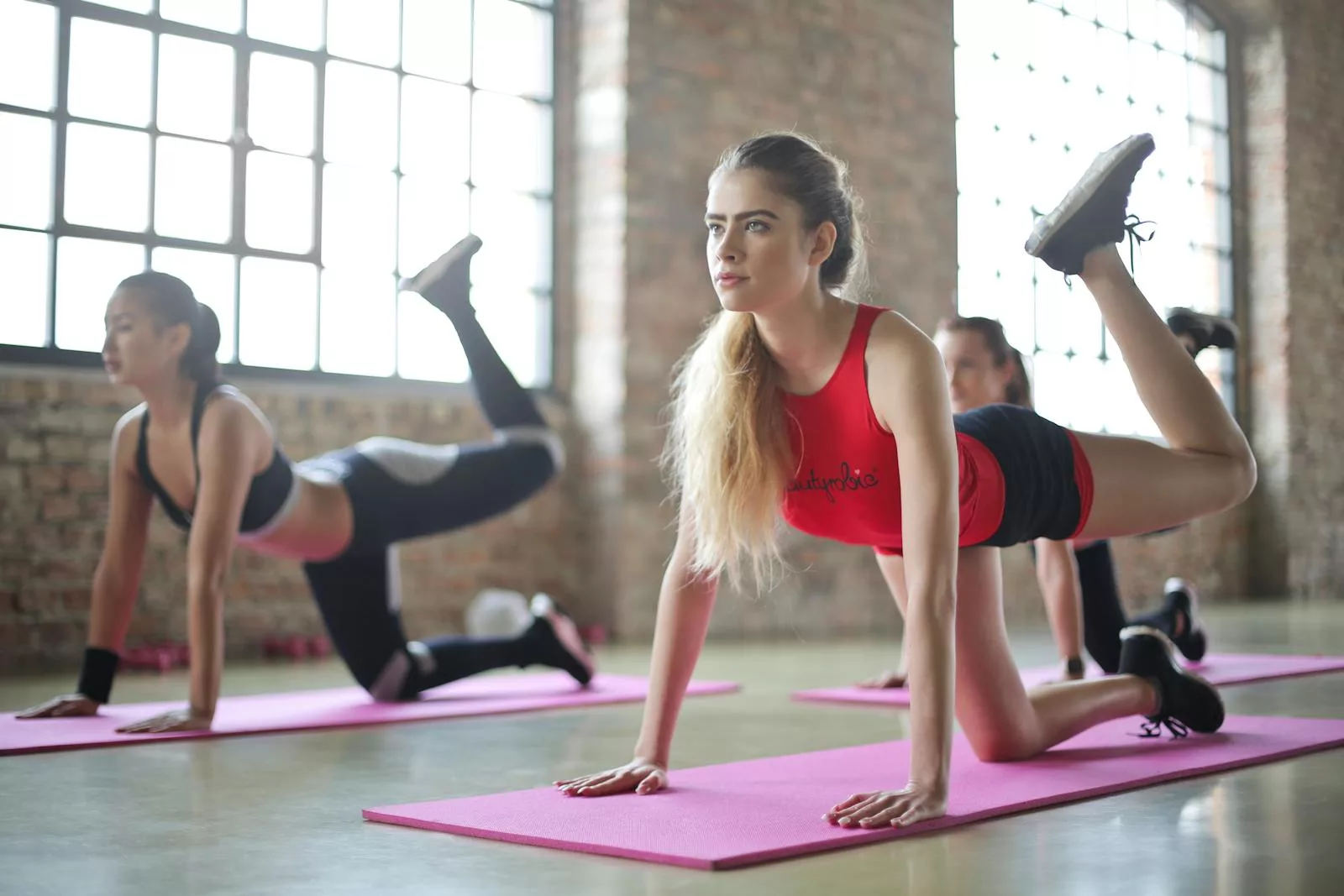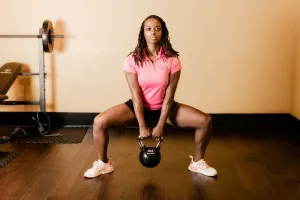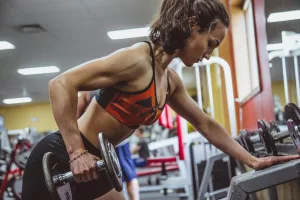Pilates has long been celebrated as a mindful workout that blends strength, flexibility, and precise movement patterns. Developed in the early 20th century by Joseph Pilates, this exercise system was originally designed to help rehabilitate injured dancers and athletes. Over time, its transformative powers became well-known among broader fitness communities, thanks in large part to its emphasis on core strength. By targeting deep stabilizing muscles, Pilates helps create a solid foundation for efficient movement, better posture, and enhanced overall health.
Today, Pilates is practiced around the globe by individuals from all walks of life who want to improve muscle tone, reduce the risk of injuries, and foster a greater sense of body awareness. Whether you’re a professional dancer, a weekend warrior, or someone who just wants to stay fit, integrating Pilates into your routine can be highly rewarding—especially when it comes to core development. In the following paragraphs, we’ll explore 20 core strength benefits of Pilates, providing insights into why this discipline is revered for cultivating a powerful trunk, stable spine, and more graceful movement in everyday life.
1. Builds a Solid Foundation of Stability
Pilates places strong emphasis on the deep core muscles, such as the transverse abdominis, multifidus, and pelvic floor. These muscles act like a girdle around your midsection, stabilizing the spine and pelvis. When these internal muscles are activated, your entire trunk becomes more resilient, allowing you to move with better control and less likelihood of injury.
A well-strengthened core provides a reliable platform for all types of movements, from lifting groceries to playing sports. With a stabilized midsection, you’re far less likely to strain peripheral muscles or push your joints beyond their range of motion. By fortifying this internal support system, Pilates practitioners often find they have more confidence in performing daily tasks, from climbing stairs to carrying children, all while sparing the back from undue stress.
2. Enhances Postural Alignment
One hallmark of Pilates is its focus on optimal posture. Many of the exercises require you to lengthen your spine, keep your shoulders down and back, and engage your abdominal region to maintain correct form. Through regular practice, these postural cues become second nature, enabling you to carry yourself with poise outside the studio.
As you become more core-focused, you’ll find that standing tall becomes less of a strain. The strengthened and balanced muscles around your midsection hold the spine in healthier alignment, diminishing the risk of chronic conditions like kyphosis (rounded shoulders) or lordosis (excessive lower back arch). When your spine is well-supported, your entire body functions more efficiently. This not only makes you look more confident but also relieves pressure from areas prone to tension, such as the neck and lower back.
3. Improves Pelvic Floor Strength
A critical but often overlooked aspect of core strength lies in the pelvic floor—the group of muscles forming the base of your torso. Pilates exercises like the Hundred or the Shoulder Bridge integrate pelvic floor engagement, helping you learn how to recruit and stabilize these muscles. Strengthening this area contributes to better bladder control, enhanced spinal support, and in some cases, an improved intimate life.
By drawing attention to subtle pelvic movements and mindful breathing, Pilates encourages you to sense and isolate these deeper structures. Over time, a more responsive pelvic floor can reduce issues like lower back pain and help maintain healthier alignment in the hips and lumbar spine. This not only boosts physical health but can also instill greater confidence, knowing you can rely on the stability of those deeper muscle layers when performing any movement.
4. Reduces Lower Back Pain
Weak core muscles often force your lower back to compensate for movements and loads it wasn’t designed to carry. The result can be chronic pain, strained ligaments, or even herniated discs. Pilates tackles this by strengthening the transverse abdominis, among other stabilizers, to support and protect the spine during daily activities.
As your deep abdominal muscles become stronger, the spinal column is better protected from compression and shearing forces. This structural support drastically lowers the probability of stress on lumbar discs, facet joints, or ligaments. With consistent Pilates sessions, individuals suffering from mild to moderate back pain often report substantial relief, as the exercises correct imbalances and redistribute tension more evenly across the core.
5. Encourages Mindful Movement
Pilates is frequently described as a mind-body method. Each exercise emphasizes precise, controlled movements, often synchronized with slow, deliberate breathing. By engaging the core with heightened body awareness, you teach yourself to move efficiently rather than rely on momentum or secondary muscle groups. This “conscious movement” approach not only strengthens your midsection but ensures that every gesture, from bending over to rotating your torso, is executed with care.
The outcome is a heightened sense of proprioception, or the awareness of your body in space. This improved coordination extends into daily life. Simple actions like walking up stairs or reaching for items on high shelves become more fluid and protected by the neuromuscular control developed in Pilates. When you move with intention, your core works synergistically with the rest of your body, promoting stability even in unfamiliar or challenging activities.
6. Improves Balance and Coordination
Strong core muscles lay the groundwork for better balance. Pilates exercises, such as single-leg stretches or plank variations, challenge you to stabilize your trunk while your limbs move in dynamic ways. This interplay between motion and stability refines your balance and helps sharpen neuromuscular connections.
As you advance through the Pilates repertoire, you’ll learn to shift your center of gravity in multiple planes. For example, exercises like Side Plank Twist or Teaser push you to stay aligned on one side of the body, forcing the obliques and transverse abdominis to fire up and maintain equilibrium. Over time, your body becomes more adept at performing complex movements without wobbling or stumbling. This heightened coordination isn’t limited to the studio either; it translates into improved performance in sports, dance, or simply walking across uneven surfaces.
7. Boosts Flexibility without Over-Straining
Pilates combines core strengthening with gentle flexibility training, targeting tight muscles that often contribute to imbalances and posture problems. By integrating slow, controlled stretches within a stable core framework, Pilates helps you lengthen and loosen the body without risking hyperextension or injury.
In moves like Swan or Spine Stretch Forward, you engage your abs and protect your spine as you reach through your limbs, fostering safer flexibility improvements. This synergy of flexibility and core engagement means you’re less likely to over-stretch or place undue pressure on vulnerable joints. Over months of practice, many Pilates enthusiasts discover a range of motion they never thought possible, all while keeping the core braced and the spine supported.
8. Refines Sports Performance
Whether you’re a swimmer, golfer, runner, or basketball player, nearly all sports benefit from a strong and stable core. The rotational power in a golfer’s swing, the dynamic strokes of a swimmer, and the agility of a tennis player all originate from a resilient midsection. Pilates is widely embraced by professional athletes who need to enhance trunk support, improve balance, and reduce injury risk.
Core strength fostered by Pilates allows you to generate more force when you pivot, jump, or sprint. It also helps you maintain better alignment during repetitive motions, lessening the stress on shoulders, hips, and knees. Athletes often find that better trunk stability translates to increased accuracy, speed, or endurance. Even if you’re just a casual sports enthusiast, Pilates can dramatically elevate your performance and reduce downtime spent nursing overused muscles or joints.
9. Develops Uniform Muscle Tone
One of Joseph Pilates’ core philosophies was balanced muscle development, ensuring that no single muscle group dominates. Many people focus heavily on superficial muscle training—like biceps or quadriceps—while neglecting deeper stabilizers. Pilates addresses this by targeting smaller, often overlooked muscles around the spine, pelvis, and hips. The outcome is more uniform muscle tone, which not only looks balanced but feels better in motion.
Unlike workouts that rely on heavy weights or high-impact exercises, Pilates employs controlled bodyweight movements, resistance bands, or specialized apparatus like the Reformer. This approach cultivates lean muscles that can function consistently throughout the day, rather than burning out quickly. As your core gains stamina, you’ll find yourself moving more efficiently for longer periods, whether it’s a busy shift at work or a weekend hiking excursion.
10. Alleviates Tension in Neck and Shoulders
Poor posture and weak abs often force the neck and shoulders to take on roles they weren’t designed for, leading to stiffness, aches, or even tension headaches. Pilates combats this by coaching you to anchor your shoulder blades down and back while letting your core carry the weight of the torso. Over time, you’ll naturally stop over-recruiting your traps and neck muscles to stabilize your upper body.
As your core becomes stronger, you reduce strain on these smaller neck and shoulder muscles, allowing them to maintain neutral alignment without strain. This can yield dramatic relief for those who spend hours at a computer or drive long distances. The newfound synergy between your torso and upper body alleviates chronic tension and helps you discover a lighter, freer sense of movement in your shoulders and upper back.
11. Supports Spinal Longevity
The spine endures significant wear and tear over a lifetime, from everyday stresses to acute injuries. Pilates helps future-proof your spine by reinforcing the muscles that keep each vertebra properly aligned. Core exercises, especially those focusing on spinal articulation—like Rolling Like a Ball or Cat-Cow—nourish the discs and vertebrae with improved blood flow and reduced compression.
In addition, when the deep core is strong, your spinal column faces fewer damaging forces. The multifidus muscles, which run along the spine, become more engaged, helping stabilize vertebrae and lessen friction between spinal joints. A healthy spine is not only about avoiding pain; it’s also about preserving mobility and function well into older age. With consistent Pilates training, many individuals find they can sustain an active lifestyle with fewer musculoskeletal setbacks.
12. Improves Breathing and Core Connection
Pilates emphasizes diaphragmatic breathing, where you inhale deeply into the sides and back of the rib cage. This heightened focus on breath works in tandem with core engagement. As you breathe in, you expand your rib cage, while on the exhale, you tighten your abs and pelvic floor. This cyclical process strengthens the unity between your respiratory muscles and abdominal muscles.
Cultivating this breath-core link offers multiple benefits. It helps you avoid holding your breath during challenging exercises, ensuring better oxygen delivery and less tension. Over time, you’ll notice improved stamina and smoother transitions between movements. In everyday life, deeper, more deliberate breathing also acts as a stress reliever, helping you stay calm and focused even under pressure.
13. Reinforces Body Symmetry
Many people develop muscle imbalances through repetitive tasks—such as carrying a child on the same hip daily or leaning to one side at a desk. Pilates addresses this by working the body in a holistic manner. Exercises like Leg Pull or Single Leg Teaser demand equal participation from both sides of your core, gradually correcting asymmetries.
As your weaker side becomes stronger, you’ll align more symmetrically around the midsection. This symmetrical strengthening not only enhances aesthetic balance but helps prevent one side from overcompensating, which can cause chronic pain. Body alignment also translates into smoother, more fluid motion in other activities, from yoga and dance to daily tasks like vacuuming or gardening. By ironing out these imbalances, you lay the groundwork for a more harmonious and injury-resistant physique.
14. Elevates Energy Levels
Strong core muscles equate to better posture, efficient breathing, and less overall strain on your body’s energy reserves. When the trunk is stabilized, you waste less energy on small corrections, wobbles, and tension. This efficiency can leave you feeling more energized and vibrant, whether you’re hitting the gym or simply running errands around town.
Additionally, improved respiration through Pilates oxygenates your tissues more effectively, invigorating both muscles and mind. An oxygen-rich environment can facilitate faster recovery times and keep you alert throughout the day. As your confidence in movement rises, you may even find yourself more motivated to stay active, forging a positive cycle of energy, movement, and well-being.
15. Enhances Core Endurance
Pilates doesn’t just make your abdominal and back muscles strong; it also boosts their endurance. Rather than focusing on short, explosive sets, many Pilates exercises use a series of sustained holds and controlled repetitions. This approach trains your core to remain active for longer stretches, which is invaluable in everyday activities like standing, walking, and maintaining good posture over a long workday.
Core endurance is critical for tasks that require you to stay upright and supported without fatigue. A stable trunk also reduces the likelihood that you’ll slip into lazy postures that strain secondary muscles. From desk workers to busy parents, anyone can benefit from a midsection that remains engaged and supportive throughout the day. Over time, you might notice fewer energy slumps and less discomfort when seated or on your feet for extended hours.
16. Aids in Rehabilitation and Injury Prevention
Physical therapists frequently recommend Pilates for patients recovering from back injuries, hip surgeries, or muscle imbalances. Since it is low-impact yet core-intensive, Pilates offers a safe environment to regain strength without overloading joints or re-injuring weakened tissues. This rehabilitative quality stems from its emphasis on controlled movements and alignment.
Pilates not only helps people bounce back from existing injuries but also acts as a preventive measure. A robust core means your spine and pelvis absorb shocks and distribute forces more effectively. By minimizing compensation patterns, Pilates reduces the strain on vulnerable areas like knees, shoulders, or ankles. Consequently, regular practitioners often experience fewer setbacks, enjoying an active lifestyle with less downtime caused by strains or sprains.
17. Supports Healthy Digestion
Though not primarily a digestive workout, a stronger core can have indirect benefits for your gut health. Many Pilates exercises incorporate abdominal compressions and spinal articulations that gently massage your internal organs. This movement can enhance blood flow and stimulate peristalsis, helping you maintain regularity and potentially easing minor digestive discomfort.
Additionally, improved posture supported by a firm core can aid digestion. When you slouch, internal organs may be compressed, hindering optimal function. Standing tall or sitting upright with a strong abdominal wall can allow your stomach and intestines more room to operate effectively. While Pilates is not a cure-all for digestive issues, it contributes to a more harmonious internal environment that encourages consistent digestion and nutrient absorption.
18. Fosters Long, Lean Muscle Aesthetics
A common reason people flock to Pilates is the promise of a long, lean physique. Thanks to its core-focused, low-resistance approach, Pilates doesn’t typically result in bulky muscle gains. Instead, it sculpts a slimmer, toned silhouette, emphasizing functional strength over pure hypertrophy. Each exercise encourages length through the spine and limbs, aligning with the method’s principle of elongation.
As you develop a firmer midsection, other muscle groups in the arms, thighs, and glutes also become more refined. This synergy is the essence of Pilates: every movement ties back to the core, generating uniform muscle definition without isolating one region excessively. Although body shape ultimately depends on multiple factors—diet, genetics, lifestyle—Pilates provides a potent avenue for those seeking balanced, graceful lines grounded in real strength.
19. Low-Impact Yet Highly Effective
While high-intensity workouts can be great for cardiovascular health, they’re not always suitable for individuals with joint issues or those seeking a gentler routine. Pilates, however, is low-impact, meaning it places minimal stress on knees, hips, and ankles. Even so, the core engagement demanded by Pilates is substantial, leading to powerful results in trunk stabilization and overall muscle endurance.
This quality makes Pilates widely accessible. Beginners can start with mat exercises that use bodyweight alone, while intermediate and advanced practitioners can progress to specialized equipment like the Reformer or Cadillac for added resistance. The ability to adapt the intensity ensures that you can build core strength steadily without risking overuse injuries or aggravating existing joint conditions. Over the long run, this balanced approach sets the stage for sustainable fitness gains.
20. Cultivates Mental Resilience
Pilates encourages a mindful approach to movement, pairing breaths with slow, intentional actions. This constant focus on form and alignment can act like a moving meditation, centering the mind and reducing stress. When engaged in a Pilates session, you’re prompted to tune out distractions and remain present in your body, which can be exceptionally grounding after a busy day.
As you master increasingly complex exercises, you also build confidence and discipline, essential traits for mental resilience. The process of learning a new movement sequence or refining an existing one fosters patience and self-awareness, qualities that often spill over into other parts of your life. In short, Pilates shapes not just the core of your body, but the core of your mindset, helping you face challenges—both physical and emotional—with poise and determination.
Conclusion
Pilates is much more than a fitness trend; it’s a timeless discipline that focuses on cultivating true strength from the inside out. By zeroing in on deep core muscles, Pilates provides a range of benefits that resonate well beyond the mat. From enhancing spinal support and posture to boosting flexibility and coordination, this form of exercise crafts a foundation of stability that can serve you in everything you do, whether it’s an athletic pursuit or everyday tasks like lifting and bending.
Each of the 20 core strength benefits of Pilates underscores the method’s holistic approach, proving that a well-trained midsection can transform nearly every aspect of your well-being. Through mindful movement and emphasis on breathing, Pilates not only refines the physical body but also sharpens mental focus, resilience, and self-awareness. Whether you’re new to fitness or seeking to elevate an established routine, Pilates offers a solid, sustainable path to a healthier, more integrated lifestyle—one in which your core is empowered to support you at every turn.




